The Central Coast of California which stretches from the south end of San Francisco, (San Mateo County) to the north end of Los Angeles, is a region of stunning contrasts where rugged cliffs meet fertile valleys. Quaint towns coexist with world-class landscapes all spread along Coastal Highway 1.
Map courtesy of www.centralcoast-toursim.com
For this weekend I decided to stop in Davenport. Davenport is a small town located on the northern edge of the Santa Cruz Mountains. It's a hidden gem with a rich history, stunning scenery, and a laid-back atmosphere often described as the Slowcoast. Locals often come to Davenport to escape the crowds of Santa Cruz.
Davenport Landing was originally founded by Captain John Pope Davenport as a fishing village in the late 19th century. The town's economy was based on fishing, agriculture, and tourism surrounding a large 400ft wharf. As storms tore through the California Coast, many wooden sea ports were lost, including the one at Davenport Landing. With lack of commerce the town eventually faded away.
Overlooking Highway 1, the Cement Plant, Davenport Beach and the town of Davenport
The current town of Davenport sprung up around a cement plant. The plant's origins trace back to 1906 when the S.C. Standard Cement Company, founded by William Dengee, Irving A. Bachman, and Charles Crocker, began operations. The decision to locate the plant in Davenport was strategic. The area boasted abundant limestone deposits, a crucial ingredient in cement production. The plant's role in rebuilding San Francisco after the devastating 1906 earthquake solidified its importance. The demand for cement skyrocketed, and Davenport became a key supplier. The coastal location facilitated transportation of the finished product utilizing the infamous Davenport Pier.
The Davenport Cement Plant peeking through the Monterey Cypress
From the edge of the steep cliffs you can still see the remnants of the old pier struggling to stay standing under constant barrage of waves and weather. Before approaching the cliffs to access any of the beaches it is important to pay attention to the the warnings. From year to year the coastline changes dramatically and several falls are reported each year.

Several warning signs litter the edges of the cliffs at beach access points.
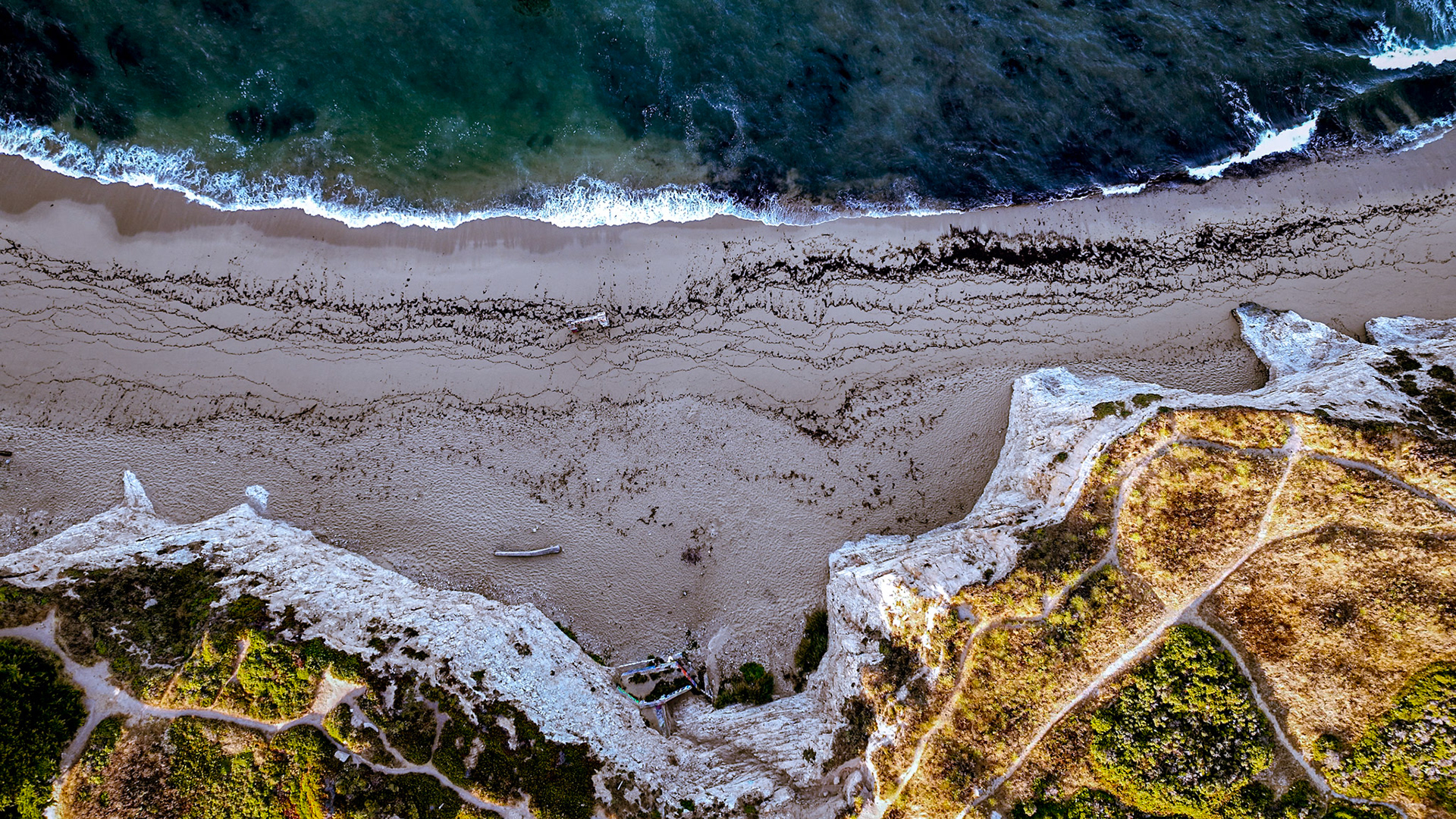
Overhead at Davenport Beach
Observing the steep cliffs of Davenport Beach
The Davenport Pier is a haunting remnant of the town's industrial past. Once a bustling hub for the cement industry, it now stands as a skeletal structure, a testament to the relentless power of the Pacific Ocean. Built in 1934 by the Santa Cruz Cement Company, the pier extended an impressive 2,327 feet into the sea. Its purpose was to facilitate the transportation of bulk dry cement to ships anchored offshore. However, the pier's lifespan was cut short by the relentless onslaught of storms. By 1954, it was severely damaged and ultimately abandoned.
A close up of one of the last remaining pylons of Davenport Pier
The overgrown and abandoned Ocean Shore Railroad
The Ocean Shore Railroad was instrumental in the growth of Davenport and the surrounding area. Built to connect San Francisco and Santa Cruz in 1905, it facilitated the transportation of goods, including the cement produced by the local plant, and connected the region to larger markets. The railway also played a crucial role in passenger travel, bringing workers to the area to work in the Cement Plant. Although never fully completed, the railroad still remains along the coastline of Santa Cruz linking all the beaches together.
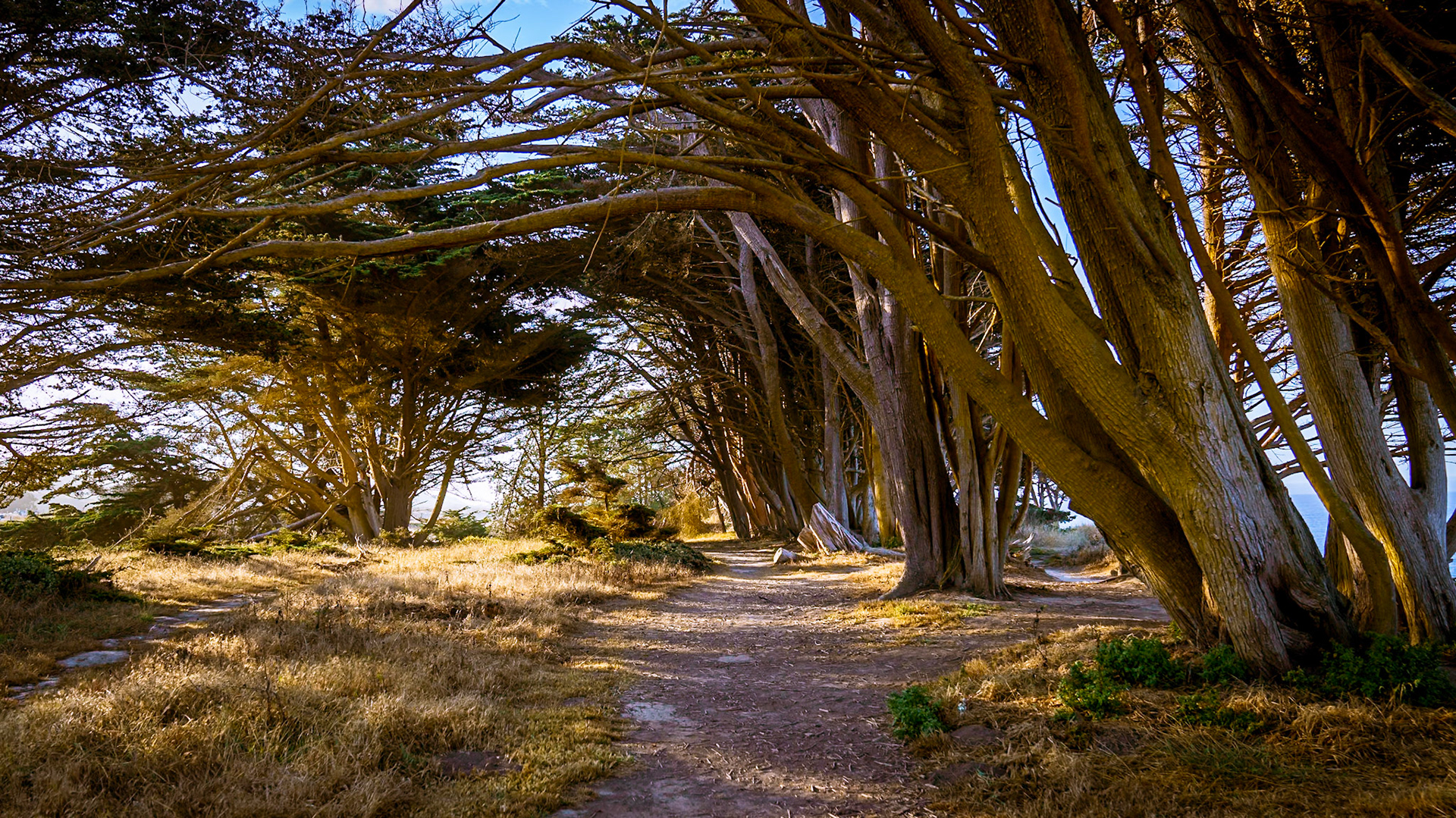
The trail along the cliff to get to the beaches
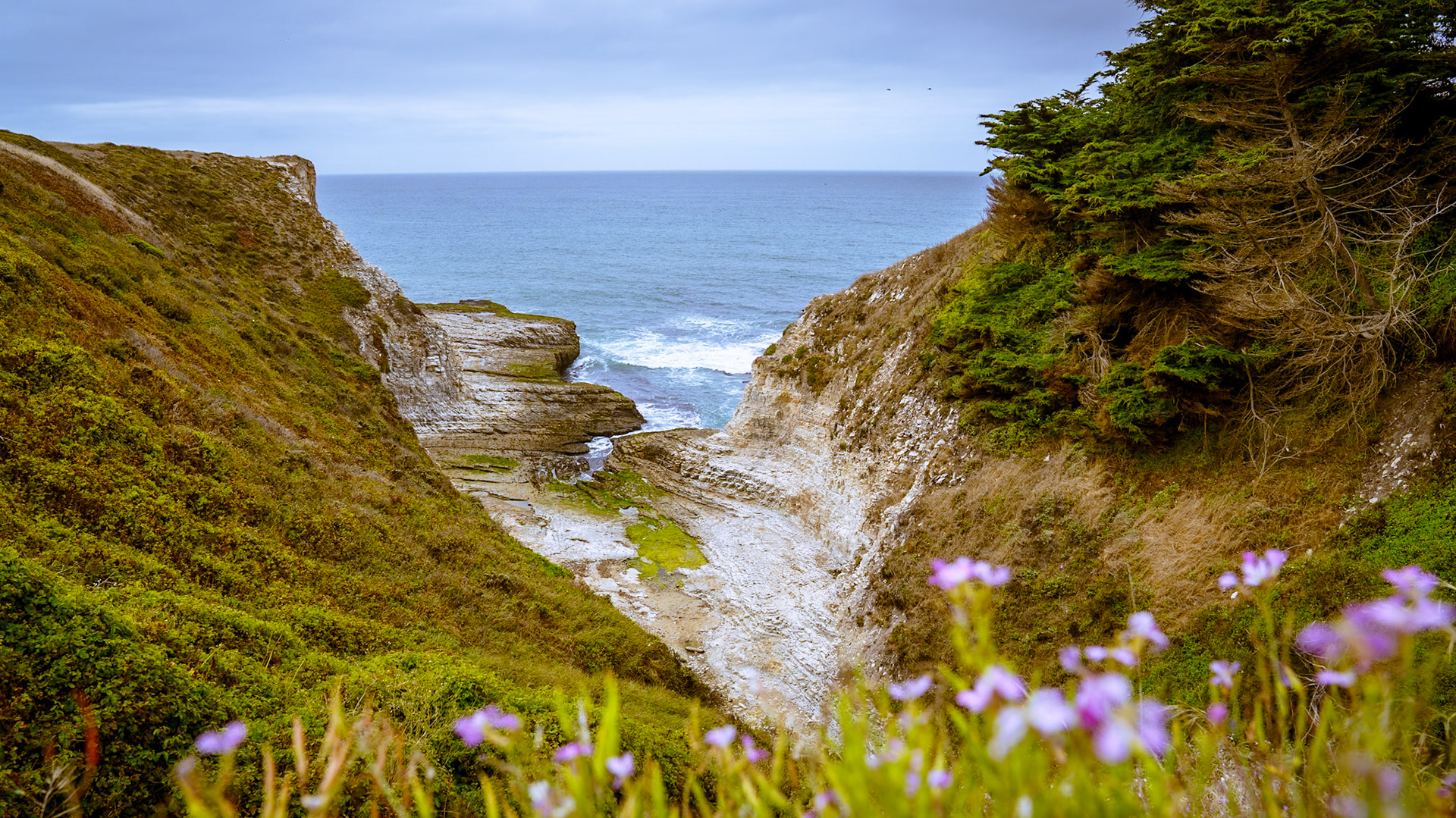
Beautiful shoreline is around every corner
The Davenport Jail is a fascinating relic of the town's past. Built in 1914, this two-room structure offers a glimpse into a bygone era. Interestingly, it was constructed using concrete produced by the nearby cement plant, further tying the jail to the town's industrial history. Despite its imposing appearance, the Davenport Jail was rarely used. It's said that the lock often rusted due to the salt water in the air, making more people break into the jail than out of it. Today, the jail is a small museum, open to the public on select weekends. Visitors can explore the two cells, and learn about the town's history through exhibits and displays.
Davenport Jail located just off Highway 1
Shark Fin Cove has been a favorite hidden beach in Davenport for a long time. A geological wonder the bashing waves have created not only the shark fin, but also a small cave just to the south of the fin. This spot is also a favorite spot of photographers due to its unique shape.
Shark Fin Cove's infamous Shark Fin Rock
Four Mile Beach is a large secluded beach just a couple minutes south of Davenport. Known as a pristine stretch of coastline it offers a unique opportunity to escape the crowds and enjoy the natural beauty of the area. This beach is enjoyed by families, surfers, naturalists and those looking to tide pool.
Overlooking Four Mile Beach from the farm cliffs
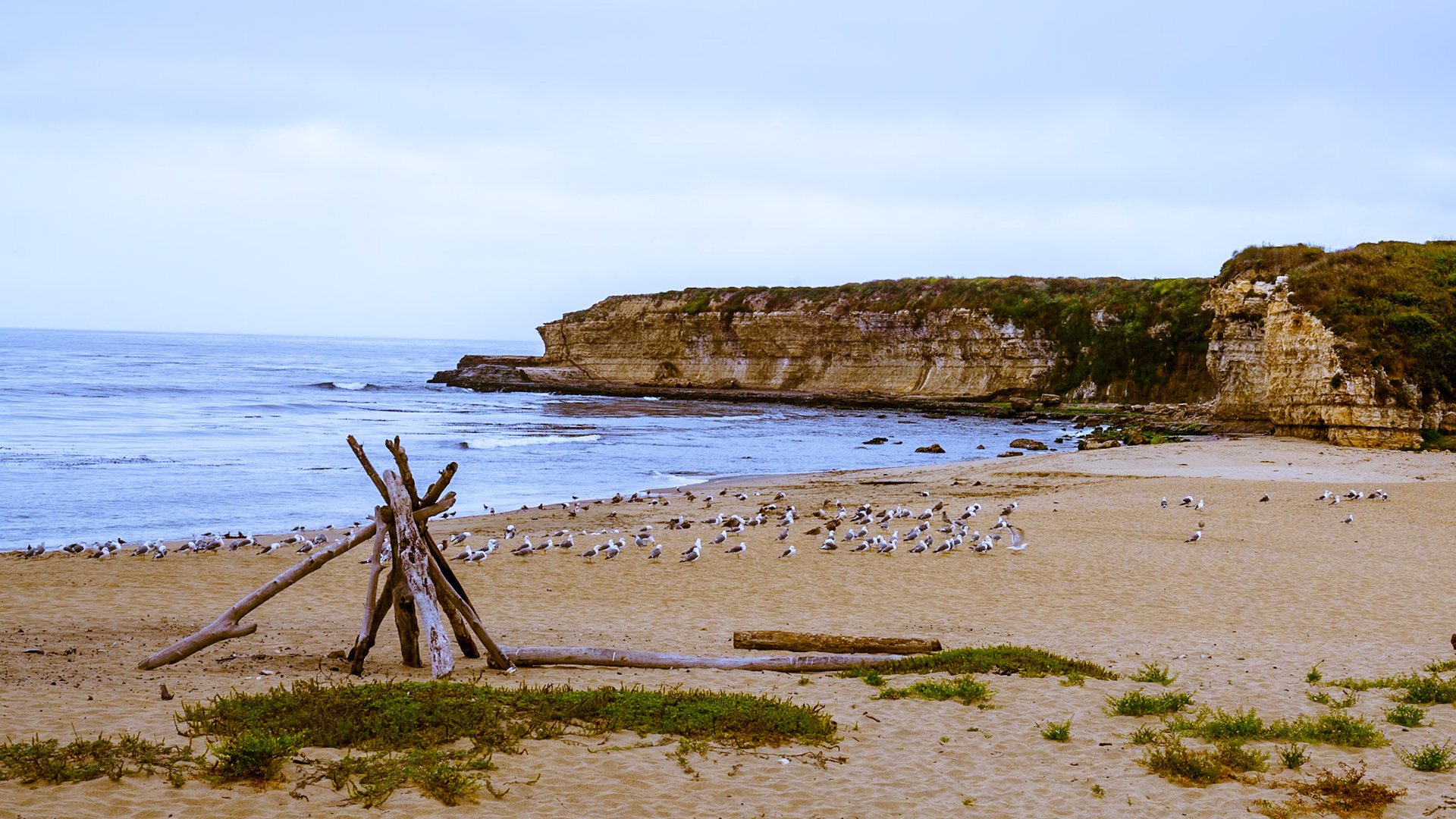
The beautiful secluded Four Mile Beach
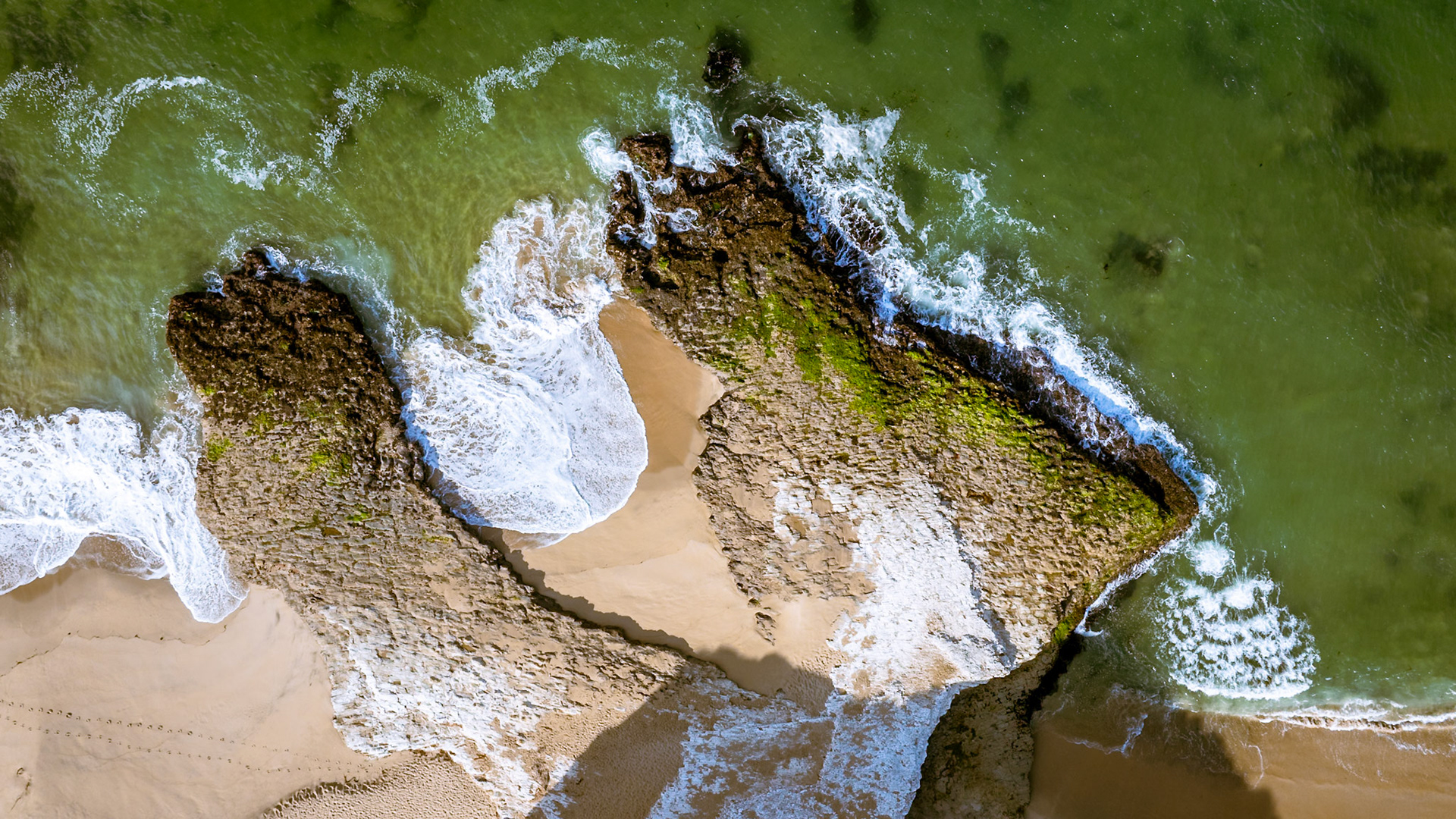
Overhead view of a tide pool rock

Giant Green Anenome, Four Mile Beach tide pool
Four Mile Beach tide pools and rocks
If you are looking for a nice place to slow down, relax, and enjoy the beauty of the California Coastline, look no further than Davenport. Arriving early in the morning will ensure you have much of the coastline to yourself allowing for some amazing photographic opportunities.
